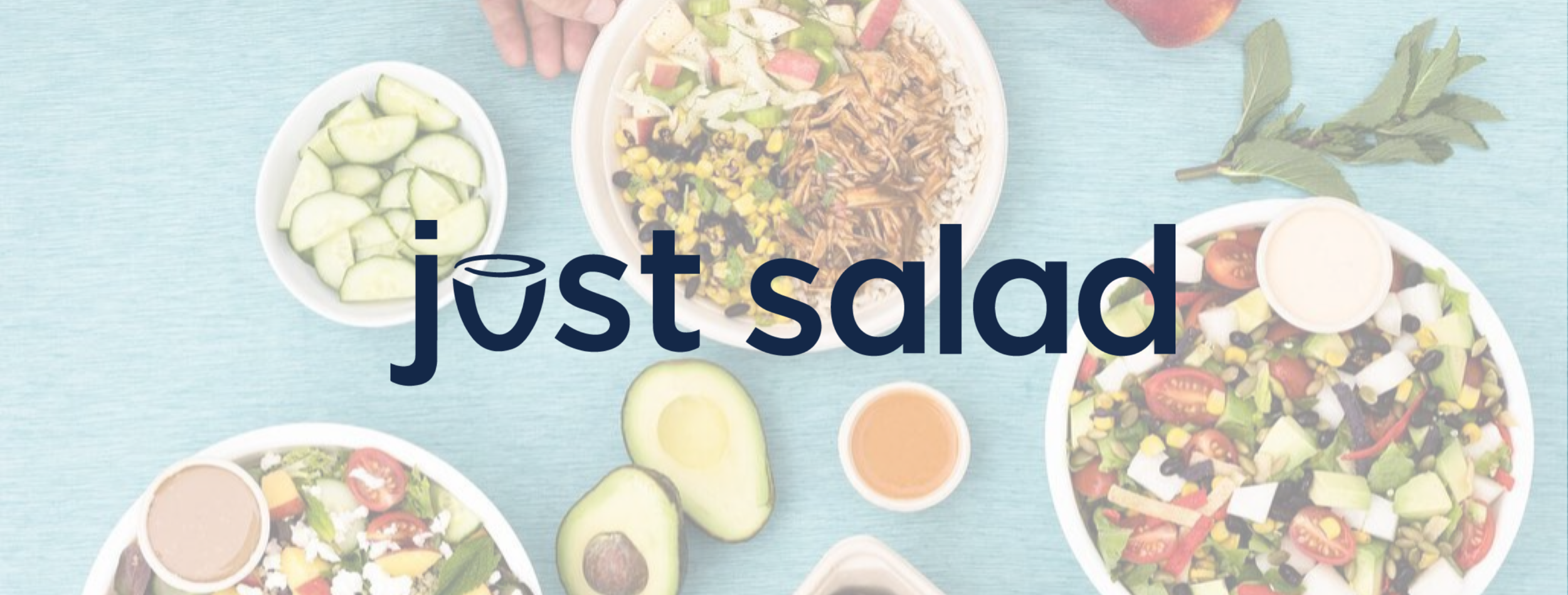Overview
Just Salad is a NYC-based fast health food chain with four locations in Chicago. For this hypothetical design challenge, my partner and I aimed to improve the user experience of the restaurant's ordering process and service design. My partner and I chose to focus on Just Salad because we both had confusing first experiences with the restaurant's user flow. Our solution included actionable recommendations including a new ordering process.
Role: Researcher, Prototype Developer, Visual Designer
Deliverables: Service blueprint, print mockups
Design Team: Bert Tisch, Kaila Quesada
Time Frame: 1 week
Research
Restaurant Observations
We conducted interviews and observation at three of Just Salad's Chicago locations, focusing on user's decisions and emotional response to the restaurant's ordering process.
Here's what we learned
User Interviews
I travelled through the line with a user to gain an understanding of her experience, followed by several more in-depth interviews with other users.
Here's what we learned
“I’m starting a salad diet so knowing there is a quick and affordable option near my office is great.”
“Speed is important to me, I don’t want to spend my whole lunch hour waiting to get my food. But sometimes it seems rushed like you’re being pushed along, you feel the urgency to pick right away.”
“Customers who buy the reusAbowl are significantly more likely to return, there are a lot of them who we know by name. The bowl is a great deal for the customer, the cost of the free ingredients is greater than the cost of the bowl itself.”
User Journey
After user interviews and contextual inquiry, we developed a user journey considering the five E's of customer journey.
Insights
Considering our research and user journey, we arrived at four key insights that would inform our design objectives.
Design Objectives
1. Make users feel confident about the Just Salad process and improve learnability
2. Optimize customer flow and promote the company's sustainable message
Concept Ideation
During concept ideation we started with a wide variety of solutions from changing the restaurant's physical space to reconsidering how employee's interact with customers.
Prototype Testing
In order to test our concepts, we created a mock up of the restaurant with our redesigned user flow.
Our MVP was a low-fidelity mockup of the hand-held menu, designed to aid learnability and make users feel more confident during the ordering process.
Here's a short video from one of our prototype testing sessions:
After prototype testing we facilitated discussion sessions with our users to get feedback.
User Feedback:
Users liked the streamlined process
They preferred getting their salad after payment rather than before
The build your own salad options weren’t clear on our original menu form
They asked for more continuity between the hand-held menu and large menu boards
With our user feedback in mind, we reiterated our concept designs.
Solution
Provide hand-held menus so customers can prepare for ordering process
Use order slips to speed up process and limit bottleneck
Promote reusAbowls by moving them to the chopping & dressing station and creating a rewards system for reusAbowl users
Eliminate one chopping station to make room for another payment station, eliminating crowding
Service Blueprint
We developed a service blueprint, which considers frontstage and backstage employee actions, in addition to the customer journey.
Hand-Held Menu & Order Card
Our main strategy to improve learnability and make our users feel more confident was to provide reusable hand-held menus so that users know what to expect before its time to order. This would also help eliminate bottlenecks from forming at the beginning of the salad making counter.
Paper order cards provide the user with an added degree of control over their ordering process and give them another chance to consider their options.
ReusAbowl Loyalty Program
Just Salad currently promotes their sustainability message with their reusable bowls, which allow customers to save on premium ingredients and generate less waste.
In an effort to further incentivize the use of reusable bowls, we designed a loyalty program where customers can register their bowls and track the number of uses to receive rewards.
This program meets business needs by creating more repeat customers.
Next Steps
1. Integrate rewards system with existing mobile app
2. User testing for reusable bowl rewards program
3. Change outdoor signage, marketing materials, etc to emphasize local and organic message















